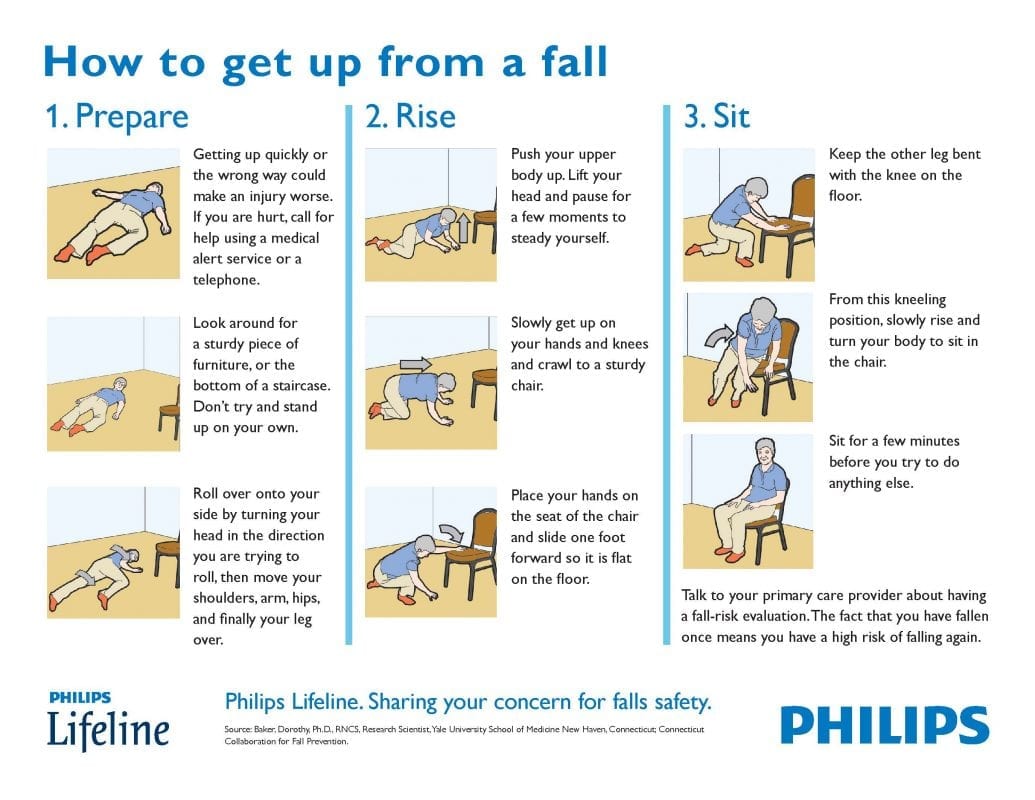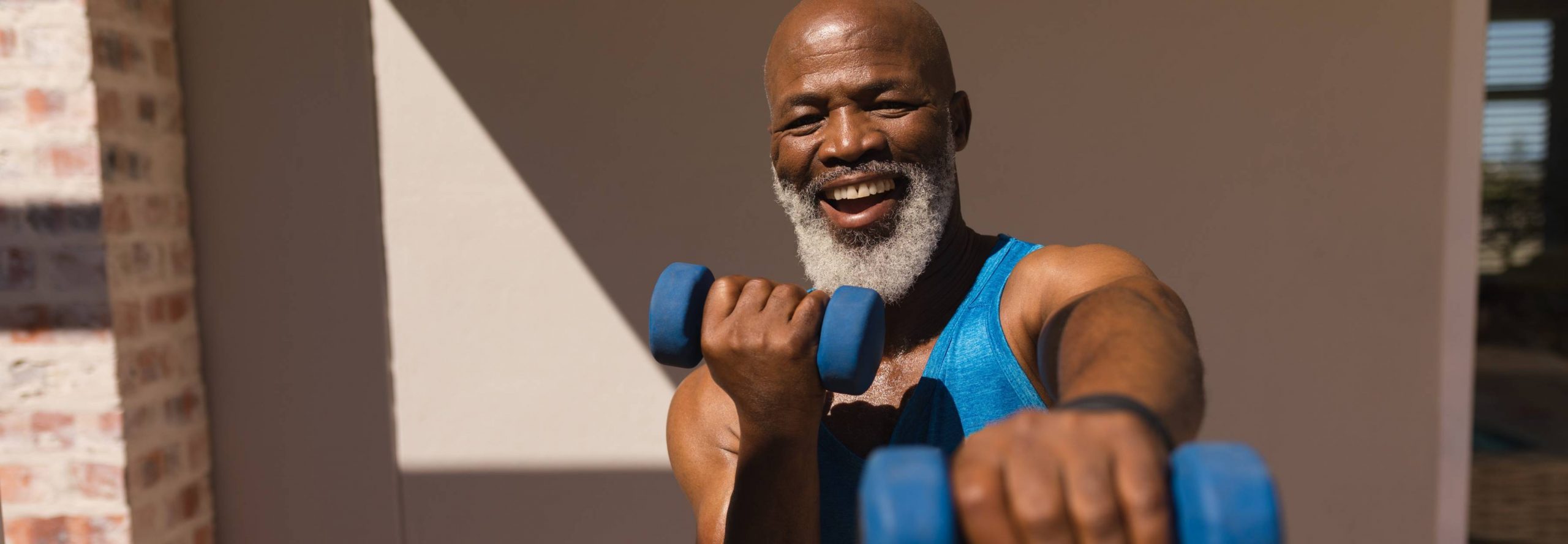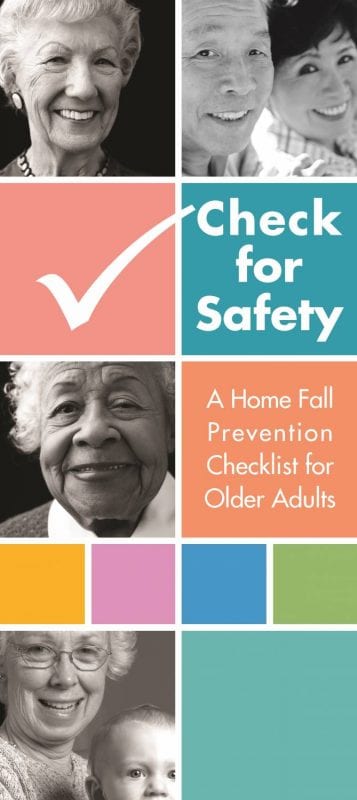A Reminder While Sheltering at Home
Fall Prevention Is Always Essential
by Jill Breysse
Each year, millions of older people—those 65 and older—fall.
Important Facts About Falls, Centers for Disease Control and Prevention
In fact, more than one out of four older people falls each year.1
One out of five falls causes a serious injury such as broken bones or a head injury.2, 3
With the current COVID-19 pandemic, many people are staying inside their homes, limiting their mobility. If they live in retirement communities, assisted living, or skilled nursing facilities where the coronavirus has struck, older adults may be staying in a single room, further limiting their mobility. This confinement may lead to lower physical activity, which in turn may lead to weakness, increasing the chance of falling and also makes people more afraid of falling. According to the Centers for Disease Control and Prevention, millions of older adults, people aged 65 years or older, fall every year. In fact, they warn, “Falling once doubles your chances of falling again.”2
The last thing an older adult needs is to become injured in a fall and end up in an overcrowded ER filled with victims of the coronavirus.
The American Heart Association recently published a timely article , “Want to Help Overstressed ERs? Be Safe at Home,” highlighting the importance of taking extra precautions to prevent falls and injuries, an important reminder that older adults confined to their homes during the COVID-19 crisis can still take simple steps to prevent falls.
Maybe you usually go for walks in your neighborhood or take classes at the senior center, but you don’t have these options right now. What can you do for yourself, in your own home, to build your strength, stamina, and flexibility? Here are some steps that may help:
1. Talk to Your Doctor
For older adults who haven’t fallen, strength and flexibility are important to prevent injury, and for those who’ve fallen in the past, it’s even more important to make sure that it doesn’t happen again. That said, it’s also important to ensure that your exercise doesn’t result in an injury.
First and foremost, talk to your physician to see if balance and exercise activities are safe for you. Your pharmacist can help you figure out if your medication or combination of medications may make you dizzy or affect your balance.
2. Keep Your Home Safe
Use this stay-at-home opportunity to check your home for safety. The U.S. Centers for Disease Control and Prevention (CDC) has a great, simple checklist, Check for Safety, which you can use to reduce fall hazards in your home. Following their easy steps will make your home safer for you, especially when exercising.
3. Be Prepared
Learn how to get up from a fall. Maintaining balance, strength, and stamina will help prevent falls, but it’s also important to know how to get up if you do take a tumble. Practice the steps on this graphic,* and keep a phone near you at all times.

4. Steady Yourself
If you know you’re unsteady on your feet, do balance activities first before taking on any aerobic exercises. Always wear comfortable, supportive shoes and use assistive equipment if needed. Below are three suggestions to get you started.
Balance and flexibility: The National Council on Aging (NCOA) has free balance and flexibility videos. We’ve included links to them here.
“6 Flexibility Exercises for Older Adults”:
<iframe width="560" height="315" src="https://www.youtube.com/embed/KcdkySvCRCc?si=vwsGV20L9kS5HmTT" title="YouTube video player" frameborder="0" allow="accelerometer; autoplay; clipboard-write; encrypted-media; gyroscope; picture-in-picture; web-share" allowfullscreen></iframe>
“Balance Exercises for Older Adults”:
Check your local listings: Your local public TV station may offer older adult balance and exercise programs.
5. Exercise
Physical exercise will help to maintain good health and prevent falls. Do only those exercises you’re comfortable doing. You don’t have to press your body weight or run a mile. In fact, here are three suggestions to get you started with some pretty simple exercises:
- Walking back and forth down your hallway, or from your front door to the back door, is a great way to exercise while sheltering at home.
- If you live with children or grandchildren, see if any of their video games have exercise options. For example, Nintendo Wii Fit video games like bowling and tennis get you moving, even from your chair!
- If you live alone and can connect online with family and friends, invite them to exercise with you! Your grandchildren will love going for “walks” with you and can cheer you on as you accumulate steps walking back and forth in your home.
When you’re ready to move on to more challenging exercises, be sure to choose exercises that match your skill and ability. The National Institute on Aging at NIH has created “Go4Life” exercise videos, ranging from 15- to 60-minute sessions for aerobics, endurance, strength, and flexibility, and we’re sharing a few of them below. Use assistive equipment if needed, and always wear shoes when exercising.
6. Telehealth for Medical Health
During the COVID-19 crisis, doctors are increasingly willing to have “office visits” over the phone. If you were having physical therapy or occupational therapy before the crisis, see if your therapists can stay in touch by phone.
7. Phone a Friend for Mental Health
Don’t let yourself get lonely. Reach out to your loved ones and neighbors—they may feel lonely, too!
Stay safe!
*The National Center for Healthy Housing (NCHH) does not recommend the products or services of any business; as such, this image is provided solely for informational purposes and should not be considered an endorsement.
References
1Bergen, G., Stevens, M. R., & Burns, E. R. (2016, September 23). Falls and fall injuries among adults aged ≥65 years — United States, 2014. Morbidity & Mortality Weekly Report (MMWR), 65(37), 993-998. DOI: http://dx.doi.org/10.15585/mmwr.mm6537a2
2Alexander, B. H., Rivara, F. P., & Wolf, M. E. (1992, July). The cost and frequency of hospitalization for fall–related injuries in older adults. American Journal of Public Health, 82(7), 1020-1023. DOI: 10.2105/ajph.82.7.1020
3Sterling, D. A., O’Connor, J. A., & Bonadies, J. (2001, January). Geriatric falls: Injury severity is high and disproportionate to mechanism. Journal of Trauma, Injury, Infection, and Critical Care, 50(1), 116-119. DOI: 10.1097/00005373-200101000-00021
4O’Loughlin, J. L., Robitalle, Y., Boivin, J.-F., & Suissa, S. (1993, March). Incidence of and risk factors for falls and injurious falls among the community-dwelling elderly. American Journal of Epidemiology, 137(3), 342-354. DOI: 10.1093/oxfordjournals.aje.a116681
Related Scientific Articles
Hayes, W. C., Myers, E. R., Morris, J. N., Gerhart, T. N., Yett, H. S., & Lipsitz, L. A. (1993, March). Impact near the hip dominates fracture risk in elderly nursing home residents who fall. Calcified Tissue International, 52(3), 192-198. DOI: 10.1007/BF00298717
Parkkari, J., Kannus, P., Palvanen, M., Natri, A., Vainio, J., Aho, H., et al. (1999, September). Majority of hip fractures occur as a result of a fall and impact on the greater trochanter of the femur: A prospective controlled hip fracture study with 206 consecutive patients. Calcified Tissue International, 65(3), 18-187. DOI: 10.1007/s002239900679
Jill Breysse, CIH, MHS, Project Manager, joined NCHH in 1998. During her time with the organization, Ms. Breysse authored several peer-reviewed research articles evaluating healthy homes hazard assessment tools and interventions; was the lead author of guidance on conducting health impact assessments for housing decisions; helped to develop the National Healthy Homes Standard, an evidence-based standard of care for existing owner-occupied and rental housing; and served as the project manager for several healthy homes projects related to older adults, such as Aging Gracefully in Place, which aimed to improve elderly residents’ physical function and enhance their housing conditions so that they can safely age in their existing homes. Ms. Breysse holds a Master of Health Science in environmental health engineering from the Johns Hopkins Bloomberg School of Public Health and a Bachelor of Science in chemistry from the University of Maryland. Ms. Breysse retired in February 2024 after 25 years with NCHH.
Latest page update: February 22, 2024 (bio only).


